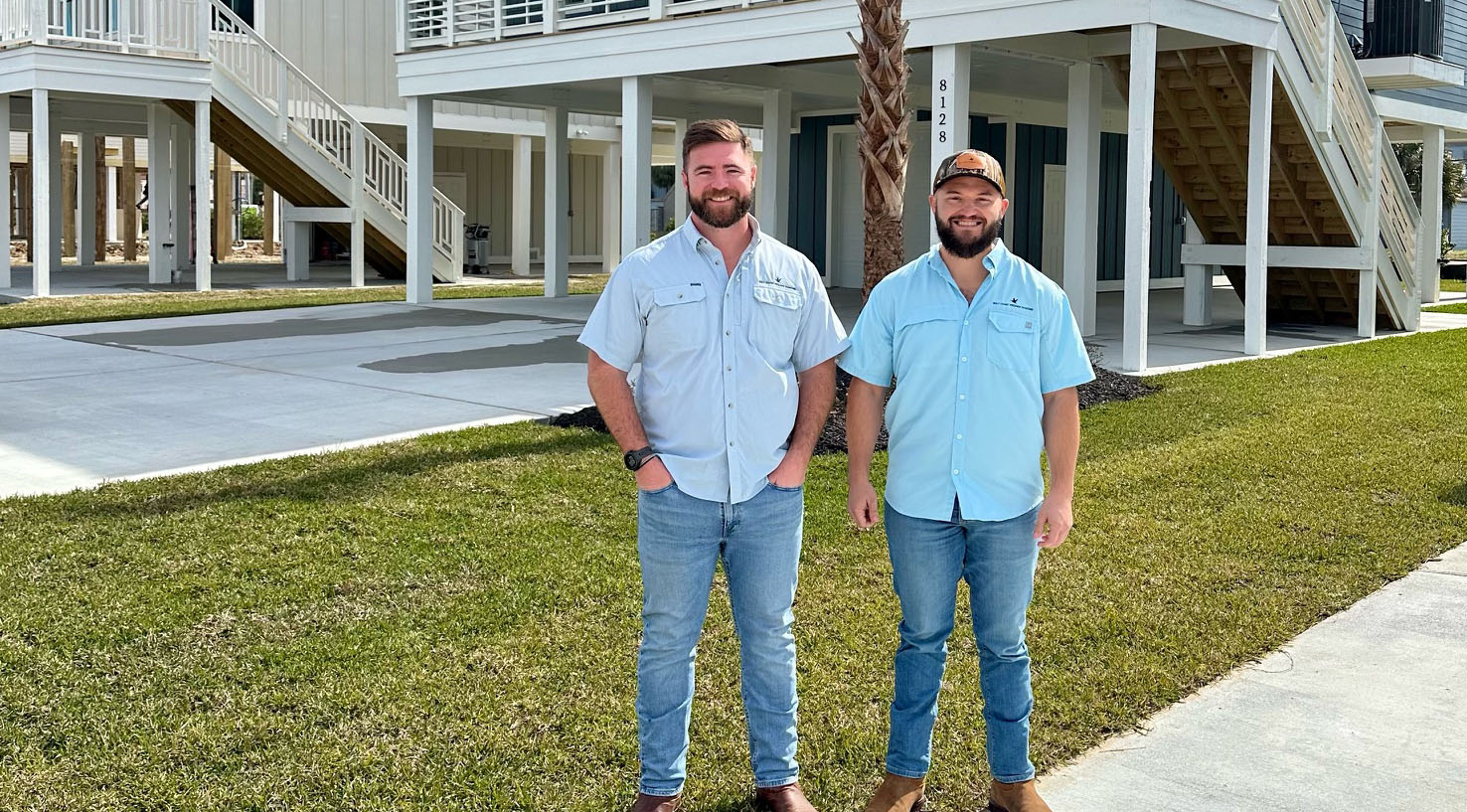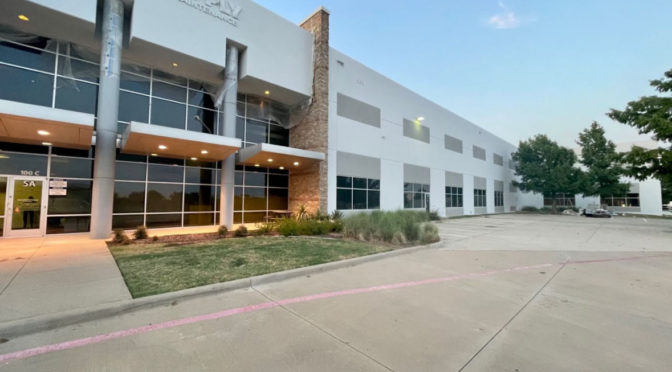The owners of Gulf Coast Premier Painting share five things they wish they’d known when they started taking on commercial jobs.
Cody Edwards and Matt Fruge, co-owners of Gulf Coast Premier Painting (GCPP) in Houston, Texas, remember the nerves they felt the first time they took on a commercial job. As contractors who had primarily worked in the residential space before, handling a large commercial project was intimidating.
“I remember it well,” Edwards says. “It wasn’t in Houston, so we were on the road. It was going to be an eight-week job: 22,000 square feet of texture on top of painting 142,000 square feet of surface. I don’t want to speak for Matt, but I was scared.”
But in the end, Edwards says, “we jumped in with both feet, and it was the best thing we could have done.”
They’re not the first contractors to take the leap. Every year, commercial jobs attract new contractors from the residential space for a variety of reasons. For GCPP, Fruge says the commercial space appealed to them because of the higher profit margins and the ability to diversify their company’s output: “We didn’t want to have all of our eggs in one basket.” They made the leap successfully; last year, 31% of GCPP’s work came from commercial projects.
While many of the basics remain the same, commercial projects differ from residential jobs in a few important ways. Understanding those differences can be the key to a company’s long-term success and profitability. In this article, Fruge and Edwards share five tips they wish they had known when they first entered the commercial space.
1. Get comfortable reading specs
“As a residential painter, I could walk up to a house and give you an estimate with ease of what it’s going to cost me to paint with labor and materials,” Edwards says.
But painters can’t just rely on their eyes and years of experience to succeed in commercial.
“When you’re dealing with commercial projects, the buildings you’ll be painting oftentimes aren’t even built yet. So you’re receiving plans and schematics. You have to be able to dig through those to find what you need. Matt and I just recently had to look through 1,467 pages of specs for an upcoming project. At this point, we’re pretty experienced, so we can find that quote in 20 minutes. But if you’re not familiar with reading specs or looking at drawings, that can be overwhelming.”
Fruge and Edwards recommend using online sources—even YouTube tutorials—that explain how to read and interpret specs and diagrams. Get familiar with those skills before you take on your first commercial job.
2. Prepare thoroughly in advance
Commercial jobs can involve logistics you never had to consider in residential. Fruge remembers pulling up to a jobsite—the biggest commercial project GCPP had done to that date—only to realize they didn’t have any access to water or electricity. It took a day to resolve that before they could continue working.
Likewise, it’s important to think through any questions you have for the general contractor, architects, or designers and ask them before you get to the jobsite.
“Communication is so key,” Fruge says. “It’s not a residential job where you can just call the homeowner or go knock on the front door to ask a question. It really stood out to me how long it takes to get answers for these projects. So we try to get all that information upfront, to minimize downtime.”

Cody Edwards and Matt Fruge of Gulf Coast Premier Painting painted the 740,000 sq. ft. commercial building pictured at the top of this article, including 140,000 sq. ft. of paintable surface and 22,000 sq. ft. in matching texture coating.
3. Commercial work can boost crew morale
One happy surprise for Fruge and Edwards was how much their crew preferred working on commercial projects compared to residential. They say it really boosted overall morale and made business negotiations a lot easier.
“Of course, the main benefit of commercial is the higher profit margins, but we also have happier crews,” Edwards says. “I think there’s two reasons. First, the work is more straightforward. You’d think painting a huge building is harder than painting a small house, but it’s not. The building only takes 1-2 colors, 1-2 products, and it’s just executing. Second, they’re not afraid of their work being scrutinized or nitpicked by the homeowner. When expectations are clear and you’ve got freedom to just do your job, it makes the work more straightforward.”
Fruge thinks the happiness may also stem from better job stability.
“With a commercial project, they know they have work for the next 4-10 weeks,” Fruge says. “That’s easier than jumping from job to job. You spend more time painting and less time traveling between projects.”
4. Financial terms can be negotiated
Edwards says he was initially caught off-guard by commercial terms and payments.
“In the residential world, if you finish the repaint on Thursday, you get a check on Thursday,” he says. “The commercial world isn’t that way. It might take 90 days after the job’s done for the client to pay you. Make sure you’ve got money prepared to float for up to three months, because that’s a big thing in this space.”
But Edwards and Fruge learned later that there are ways around this when necessary.
“Payment terms are up for negotiation,” Edwards says. “You can take a little bit less overall in order to get your money sooner. For instance, I could do a job for $100,000 and wait 90 days for payment, or do a job for $90,000 and get paid in 30 days. Nobody told us we could do that when we first started, but negotiations can be flexible. Do what makes sense for your business.”
5. Sherwin-Williams offers support in many ways
“I wouldn’t take on any large job without Sherwin-Williams on my side,” Edwards says.
That’s because Sherwin-Williams made the transition from residential to commercial work possible for GCPP in many ways. The company received assistance on many large jobs through their Sherwin-Williams account. Fruge says local reps have helped them choose the right sprayers, tips, and coatings for upcoming projects. They choose Sherwin-Williams over its competitors because of the service provided by the company’s experienced store managers and sales representatives.
“When you buy that gallon of paint, you’re getting a lot more than just a gallon of paint,” Edwards says. “That’s what sets them apart from the competition.”
Kelly Munerlyn, the sales representative who works with GCPP, says Sherwin-Williams can offer valuable resources that make the residential-to-commercial transition smooth for contractors.
“Always get your rep involved,” Munerlyn says. “We’ll go out to commercial job sites, do a job walk, make recommendations on what products will be needed, and help the contractor build a Paint Maintenance Guide. The Paint Maintenance Guide is like a spec list for the client to be able to see what colors and paints have been used throughout the facility—in case they ever need to touch it up later. It makes the contractor look even more professional and helps make a good impression.”
Bottom line: go for it!
For any contractors considering dipping their toes into the commercial market, Edwards and Fruge recommend it wholeheartedly. They say investing in commercial jobs has completely changed their business, and their goal is to do even more commercial projects in the next year.
“This year, our goal is 50 percent – and next year, we’d like to get to 75 percent,” Edwards says. “We still enjoy residential. You get paid quickly, and you can knock them out quickly. Those are your singles and doubles. But I would call commercial jobs your triples and your home runs. Those are what will really move the needle as far as revenue and profits go for your business. So if you’re reading this and thinking about going into the commercial world: Take the leap! You won’t regret it.”




